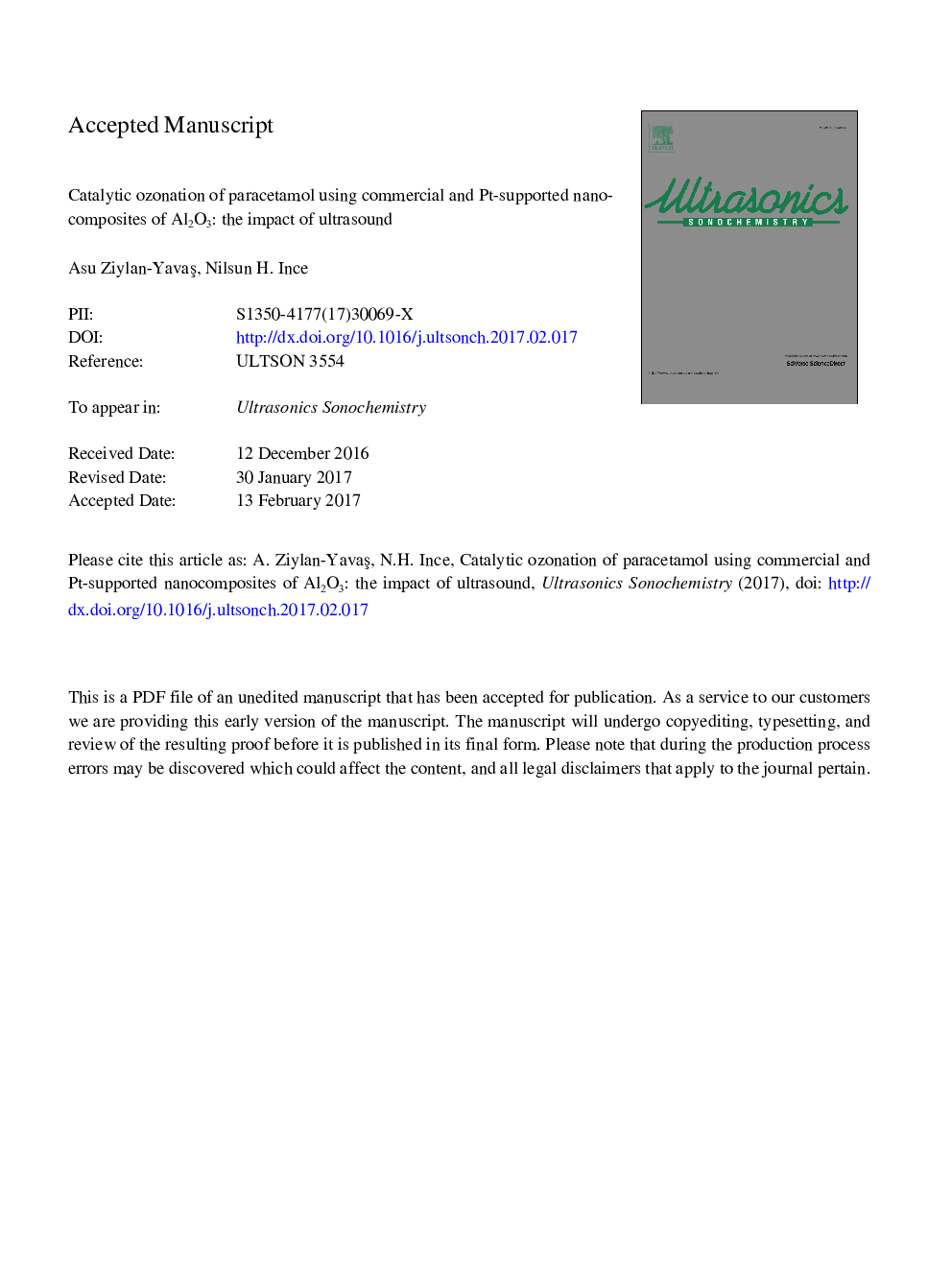| Article ID | Journal | Published Year | Pages | File Type |
|---|---|---|---|---|
| 7703614 | Ultrasonics Sonochemistry | 2018 | 28 Pages |
Abstract
The study is the assessment of commercial γ-Al2O3 and its sonolytically modified nanocomposite in catalytic ozonation of paracetamol (PCT), which is an emerging water contaminant and a highly reactive compound with ozone. The results showed that commercial alumina was ineffective regardless of the solution pH, due to the low affinity of the catalyst surface for PCT and the high reactivity of the solute with molecular ozone. The modified catalyst, which was synthesized by decoration of the original surface with nanoparticles of platinum provided considerable improvement in the performance of the catalyst, particularly in mineralization of the target compound. The presence of OH scavenging agents in solution markedly retarded the rate of PCT oxidation and organic carbon decay, to signal the importance of radical-mediated reaction mechanisms on the degradation of the compound. Finally, the attempt to accelerate the reactions by running them in the presence of ultrasound was found inadequate for the early oxidation, but highly adequate for the longer mineralization process. The failure was attributed to the diffusion of a large fraction of ozone into the gaseous cavity bubbles (reduced probability of direct reactions) and the extreme conditions of cavitation collapse that partially damaged the catalyst surface. The success (in mineralization) was explained by the shift of the reaction site from the bulk solution (poor adsorption on catalyst surfaces) to the solid surface and the gaseous cavity bubbles (via enhanced hydrophobicity), both being considerably more active reaction media.
Related Topics
Physical Sciences and Engineering
Chemistry
Chemistry (General)
Authors
Asu Ziylan-YavaÅ, Nilsun H. Ince,
